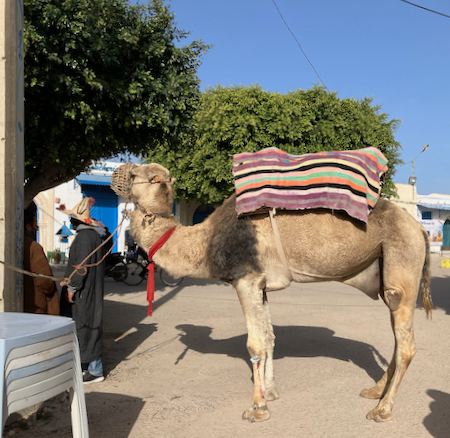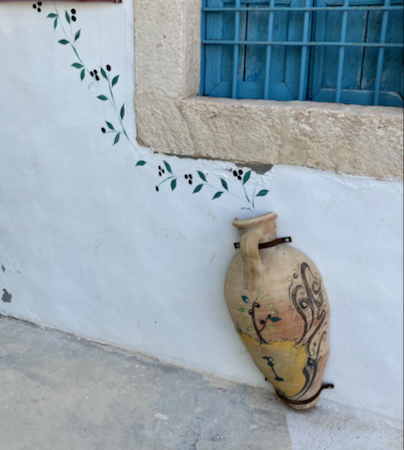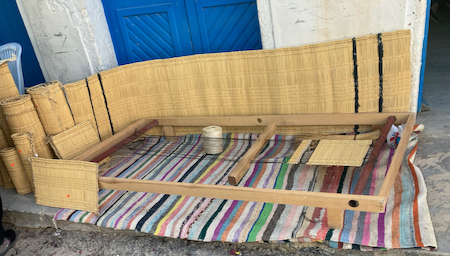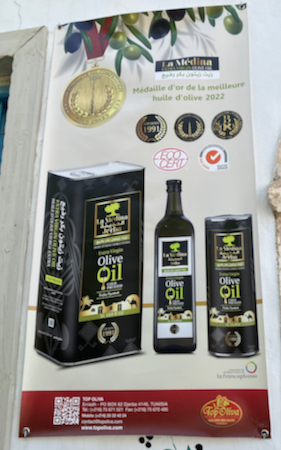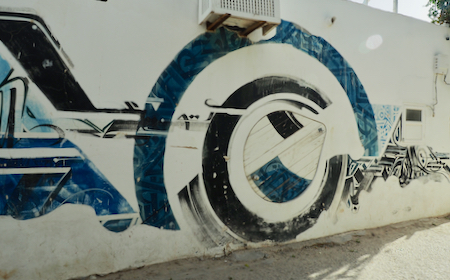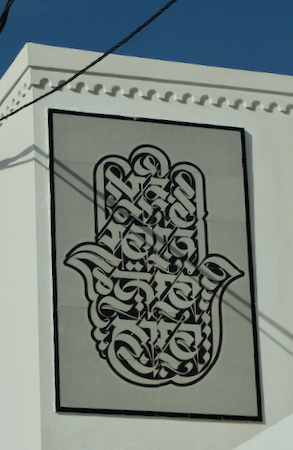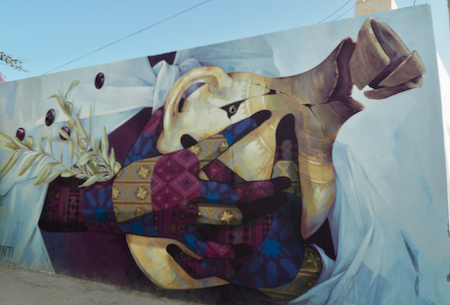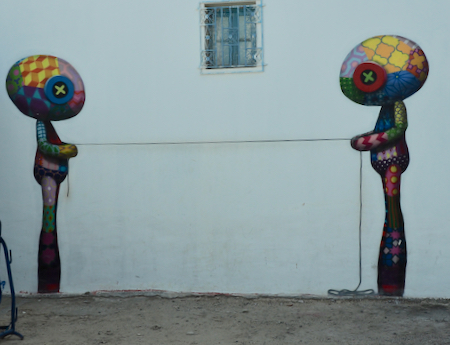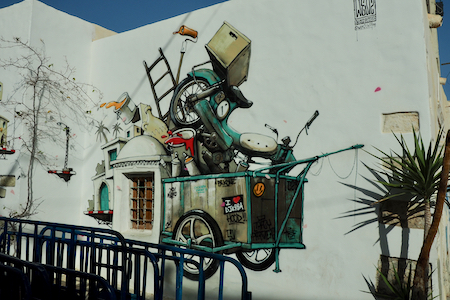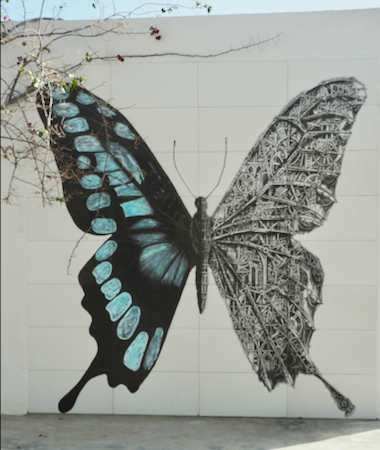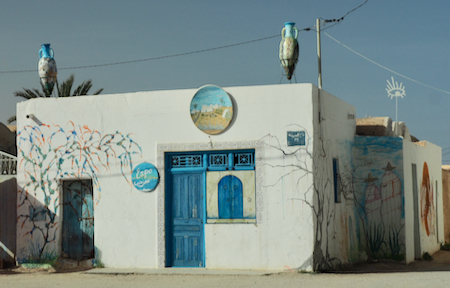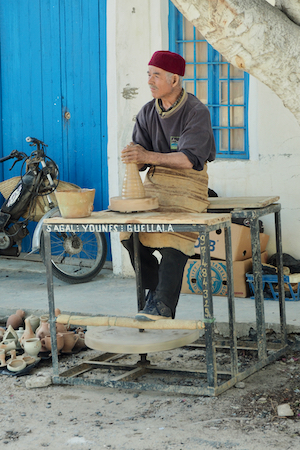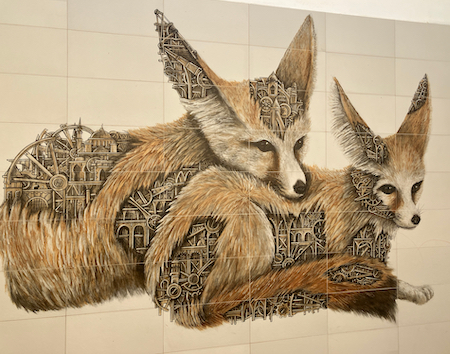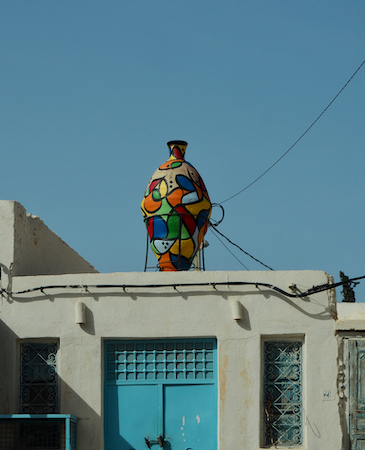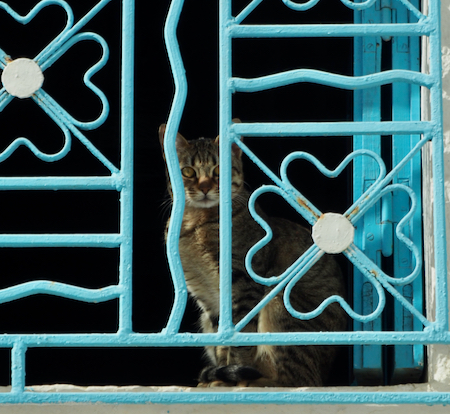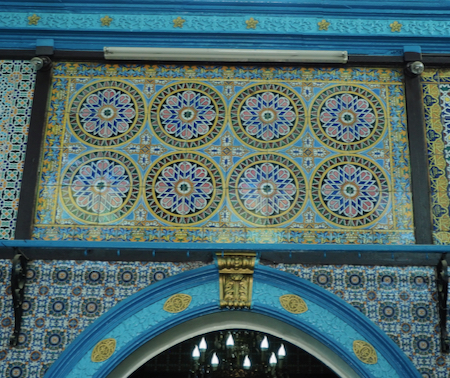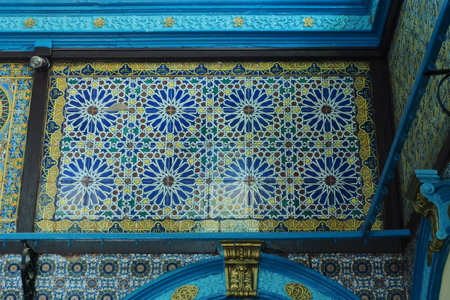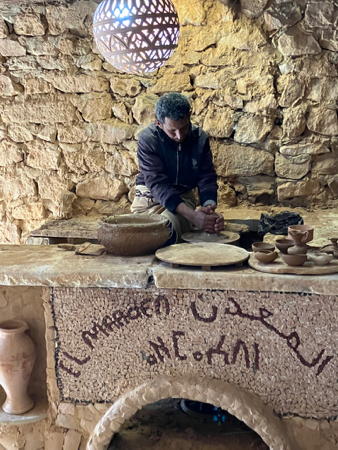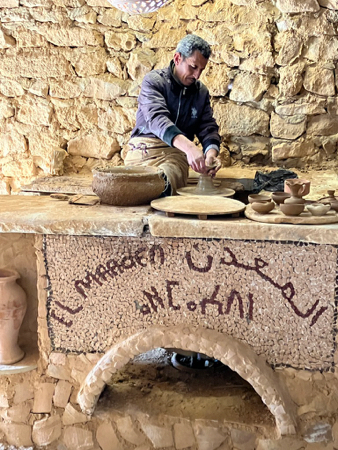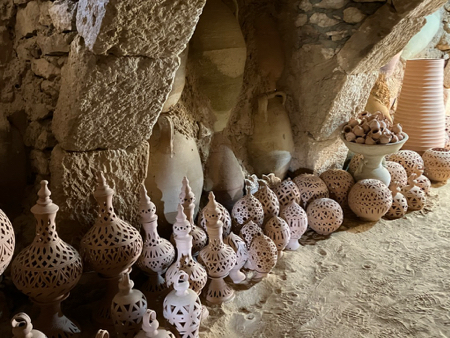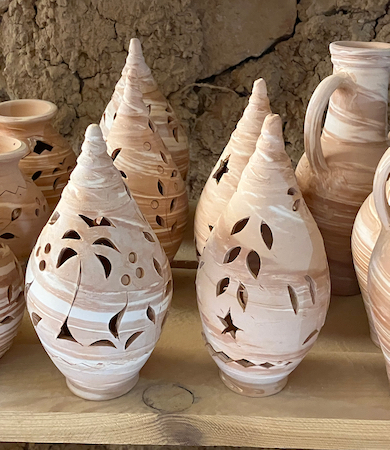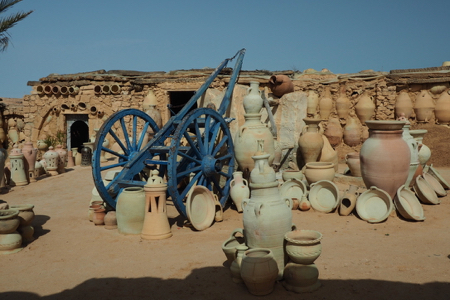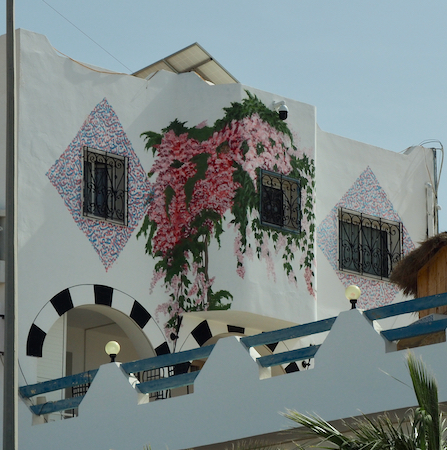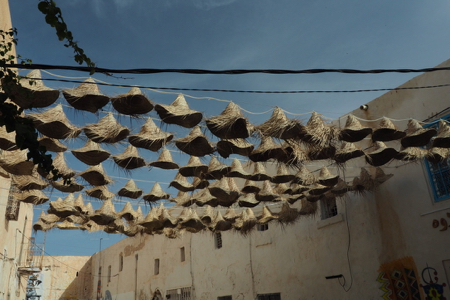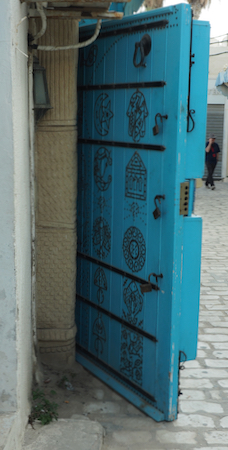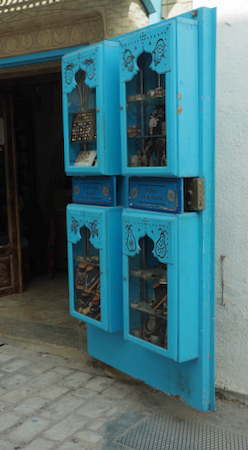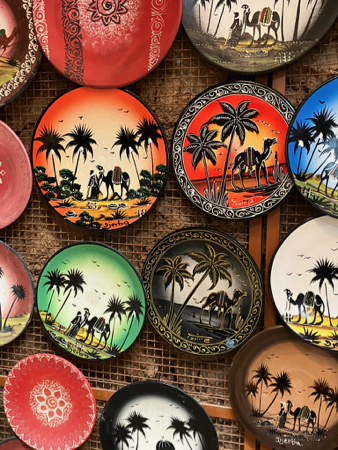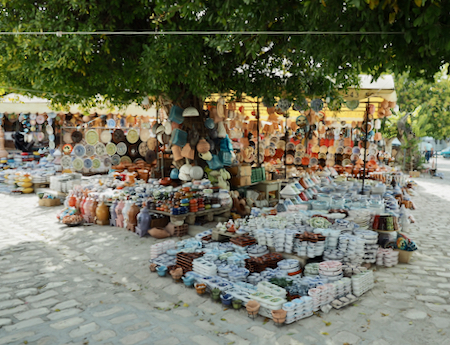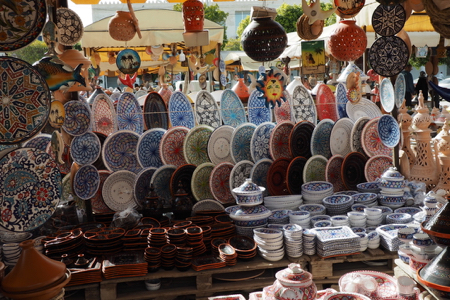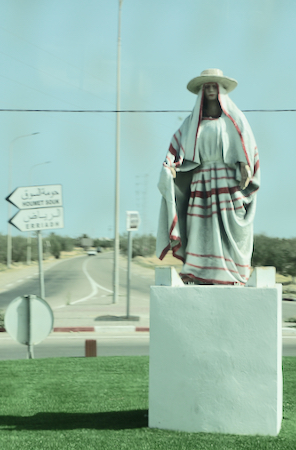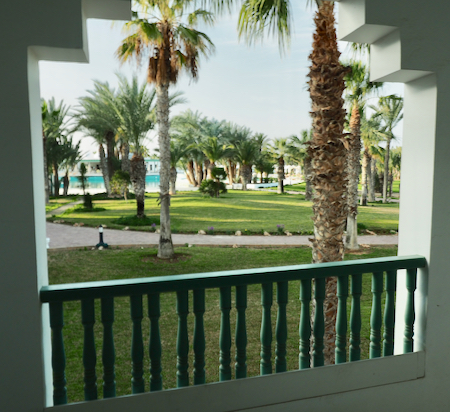Fri., 2/24/23 - Island of Djerba
Today we took a1-hour domestic flight at 7:10am from Tunis to the island of Djerba, the largest of the Tunisian islands in the Mediterranean. While we had a good night's sleep (at least until 4 am), our bus driver drove the six hours from Tunis to Djerba and met us at the airport.
The first stop was at the Jewish community of Djerbahood. This lovely little town has many white domed houses with bright blue doors and shutters and iron window bars. In 2004, the mayor decided to invite artists to decorate the town by painting pictures on the walls of houses and other buildings. The result was around 250 paintings of all sizes on, seemingly, most of the walls in town. (Photos of some of the art work, unlabeled, are presented below.) Some roofs had an interesting weather vane that was an “evil eye” to protect the house.
Waiting for a rider
Loom
Weaver at work
Local olive oil
An “evil eye” weather vane to protect the house
Local restaurant
Local potter
This is a real, live kitty
The next stop was at the oldest synagogue in Africa, El Ghriba. The entrance to the area had very heavy security with airport-like scanners and many armed guards. This synagogue was bombed in 2002 by an al Qaeda truck full of explosives. Many Western tourists were killed.
As we entered the area, the men had to put on yamakas and the women had to put on head scarfs and cover their bare legs. Additionally, shoes had to be removed to enter the main room with the Arc of the Covenant - some of us opted not to enter.(About three months after our visit, a shooting at the synagogue killed 5 people.)
Entrance to El Ghirba
Beautiful tile work
The day's next stop was at Guellala to visit a pottery craft place.
The clay is quarried there 20 meters below the surface. One man digs and another man carries it outside where it sits to dry out for seven days. The clumps are smashed to powder and the powder sits in water for 3 or 4 days to make it pliable. If fresh water is used, the clay will be red, if salt water is used it turns white. Men mix the powder and water with their feet for two hours. White clay can be molded into cups for drinking or bowls for food, while red clay is used only for decorations. The craftsman demonstrated making a cup and saucer on his pottery wheel. Items are then dried in a large kiln heated with wood from palm tree trunks. When finished, women can paint designs on the item and glaze them in an electric kiln.
Expert potter
Pottery products
Lovely vases
Desert Rose - Saharan gypsum
The pottery yard
Young camels
At Houmt Souk, we had time for lunch and free time shopping. Lunch was good - french bread, spicy bean soup, chickpeas, rice and meat stuffed potato, zucchini, and pepper. Dessert was a huge orange - taken for eating later.
The shopping was typical for the area so most of the group ended up sitting at an outdoor cafe to wait for the "shoppers" to finish.
Hats strung up over the street
Originally the door to a bank vault
Cleverly converted to shopping displays
Blue windows, doors, and shutters everywhere
Decorated plates
Lots of pots
Lots of plates
Statue of woman in native costume at a round-about
View from our hotel room
| Return to Top | Return to Itinerary | Return to Trips page to view other trips | Return to Dreamcatcher Home Page |
